
|
 |
Health Club Management Handbook - 2016 predictions

Industry insights

|
|
| 2016 predictions
|

What might the coming year bring for the fitness and
physical activity sector? We ask our panel of experts
|
|
|
 |

Ray Algar
MD
Oxygen Consulting, UK
 |
|
Independent health clubs make up half of the private sector in the United Kingdom, but in spite of this significant market presence, I believe their long-term role is being fundamentally challenged.
Last year, independent clubs accounted for three in every four clubs that went out of business. Those sites that closed had limited physical resources, and were unable to grow their membership or to raise their membership fees.
The offering at these clubs had been slowly ‘salami-sliced’ by low-cost gyms, upgraded public sector facilities and an array of other club substitutes until what remained was simply a redundant business.
However, as well as resources, what these clubs notably lacked was a compelling purpose or mission – a reason to exist that inspired its stakeholders.
For this reason, during 2016 I’m expecting independent health clubs to begin redefining themselves from ‘fitness generalists’ to ‘signature specialists’. This means serving up more remarkable fitness experiences powered by passion and a deep expertise.
Most independent health clubs cannot become a low-cost provider quite simply because they lack the suitable infrastructure. Instead, if they are to survive this year and going forward, they must innovate and build a formidable reputation by doing less, but doing it better than others. They must harness the power of being small, intimate and deep-rooted in their communities to provide a compelling reason for their members in 2016 to join and stay.
"Independent clubs will begin redefining themselves from ‘fitness generalists’ to ‘signature specialists’, powered by passion and a deep expertise"
| |
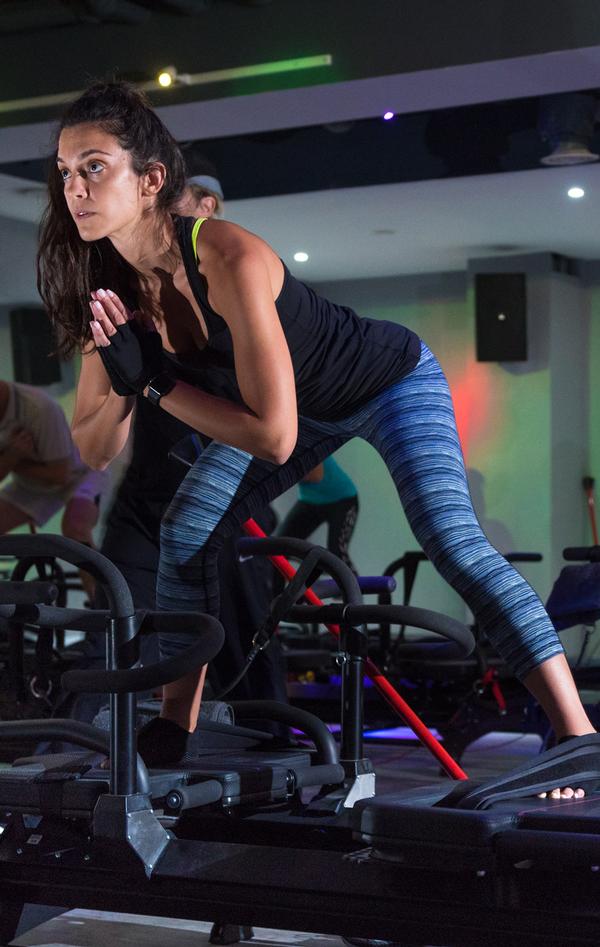

|

Like Lagree Fitness, independent operators must create a niche for themselves if they are to survive |
|
|
 |

Justin Tamsett
Founder
Active Management, Australia
 |
|
Across the globe, we’ve seen the proliferation of high-intensity interval training (HIIT) programmes run by personal trainers in parks, in clubs and as an integral part of niche clubs.
Many believe we had to go this way to keep up with CrossFit, but I disagree. People went to CrossFit because health clubs had morphed into fitness centres. They no longer offered a club or a community, and that’s what people wanted. In 2016, the fitness industry will need to decide if it wants to help the fit get fitter or the unhealthy get healthier.
By choosing the latter we open up a massive market and opportunity, as by far the majority of the world’s population are not gym members. But this will mean a repositioning of exercise, coaching new clients on the basics of exercise, and potentially increasing the yield per client.
2016 will be the year of the super consumer: the person who isn’t an avid exerciser but who knows they need to move more, who measures everything on their smart device, who wants to feel part of community – and who’s prepared to pay for it. The question is: is there a place for this person to go?
"In 2016, the fitness industry will need to decide if it wants to help the fit get fitter, or the unhealthy get healthier"
| |


|
| Photo: shutterstock.com |

Fitness operators need to focus on offering a true sense of community among members |
|
|
 |

Jonathan Spaven
Property director,
The Gym Group, UK
 |
|
As ever, the property market fluctuates, with supply and demand vying to outdo each other. The glut of low-hanging fruit post-Lehman and the subprime mortgage crisis has largely been snapped up over the last three years or so – yet different opportunities now come forward.
Development is back, particularly in London. Large residential and mixed-use schemes are coming through the planning stage and are starting to get off the ground. These will provide opportunity for a wide variety of leisure occupiers.
The re-consolidation of large space users in the supermarket and DIY sectors has also brought new vacant space to the market. This will continue through 2016 and particularly suits the larger space leisure operators; the new trend of trampoline parks will benefit and proliferate, with a peak still to come.
Yet prime space will remain highly sought after. As some landlords begin to seek primary prices for tertiary space, there will be those who pay the price now and who run the risk of literally paying the price later. It will be difficult for smaller chains and new entrants, who will find the best sites will go to the best covenants.
| |


|

Trampoline parks like
Oxygen Freejumping
will proliferate in 2016 |
|
|
 |

Phillip Mills
CEO
Les Mills International, New Zealand
 |
|
The scandal around junk food companies has been a huge embarrassment for our industry. We’ll see more and more junk food regulation, such as sugar taxes, in an attempt to cut soaring national health bills. Sugar is becoming the new tobacco and it’s our responsibility as an industry to lobby for this and educate people about how to eat better.
Meanwhile, if we don’t become digitally literate, we risk irrelevance. Weight Watchers’ share price has fallen by over 90 per cent from its 2011 peak as it’s lost market share to digital apps and wearables. We have to be able to supply exercise programming and health advice inside and outside the gym – anywhere, any time – to stop the same thing happening to our industry.
Traditional gyms will get better at catering for the huge Millennial market. This will mean responding to boutique clubs by creating boutique experiences within our own clubs. Gen Z turns 16 in 2016, which heralds the beginning of even greater dominance of our industry by the Gen Y/Gen Z market. We must cater for these age groups or we will gradually die.
At the low-tech end of the scale, we’ll see the continued growth of HIIT classes and other CrossFit-like experiences in clubs. At the hi-tech end, we’ll see the dawn of virtual reality (VR) exercise experiences – such as Oculus glasses – entering the fitness market. Virtual reality is going to change the world.
| |
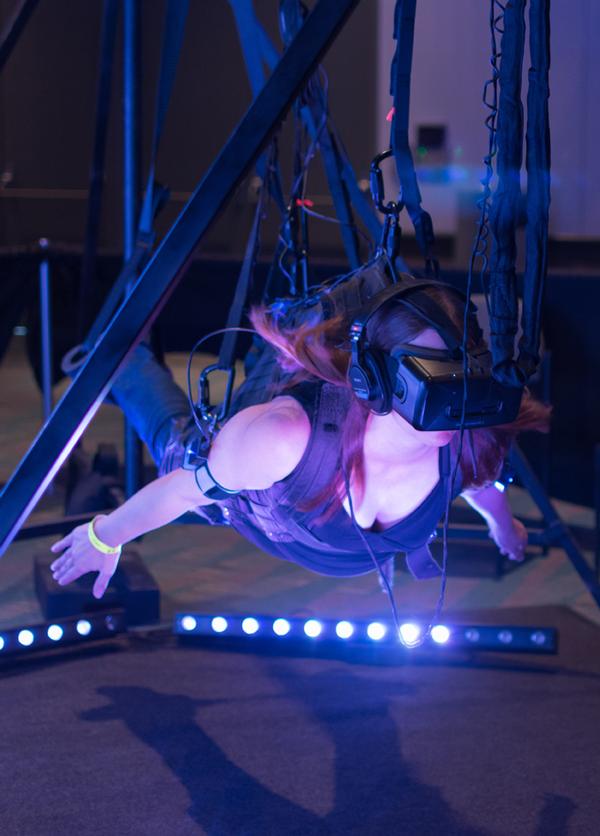

|
| Photo: shutterstock.com |

Oculus VR glasses will bring a new dimension to fitness |
|
|
 |

Arron Williams
Special projects
Life Fitness
 |
|
Health clubs are moving on from being a place to work out to being a place to work out and hang out in your precious downtime; working out is set to become the new healthy form of going out.
This trend is being led by the boutiques, with a multitude of deluxe studios offering hip and healthy ways to be entertained: kick ass until you reach a blissful dopamine state, then enjoy a post-workout oxytocin surge as you sip coconut water and hug your exercise buddies while considering the merits of tomorrow’s workout schedule: a 10k Spartan run followed by the ‘little black leggings challenge’ at barrecore, topped off with a kale and cucumber super smoothie, a falafel wrap and a trip to Sweaty Betty.
The industry is fast moving towards a state where the crucial currency is the quality of the exercise experience. Consumers are swamped with an avalanche of information on health club offerings and exercise recommendations, but social media channels have ushered in a new era of #gymspiration and #fitspiration. Pleasure, surprise and delight are the new order, towards which a supremely confident breed of exercisers stride.
This ‘Fit-Gen’ use their social media feeds to source inspiration for new types of exercise experience offerings. From this, they create a flexible, ultra-personalised exercise journey towards a healthier, more vibrant lifestyle – and this is ushering in a new model of exercise consumption.
| |
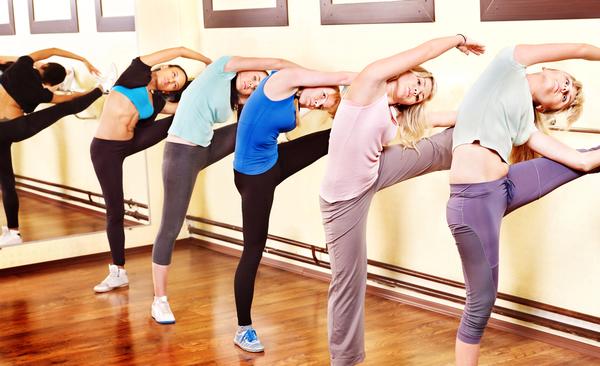

|
| Photo: shutterstock.com |

Working out will become the new healthy form of going out |
|
|
 |

Tom Williams
Managing director
parkrun, UK
 |
|
For many years, fitness providers and even fitness trends have existed largely in their own silos, believing themselves to be the sole solution and isolating themselves from their ‘competitors’.
Gyms believed everything could be achieved within their own four walls, diets implied you could out-eat poor lifestyle choices, and critical lifestyle factors – such as sleep hygiene or stress reduction – were all but ignored. Unfortunately, the work-hard play-hard generation are now suffering from burnout.
People have become aware of the need for a holistic approach to their health and fitness, with self-education at the heart of their strategy. Consumers no longer want to simply be told what to do – they want to be educated as to the reasons why, then empowered to make their choices.
In 2016, I believe the most successful organisations in the health and fitness sector will be those that understand not only their strengths but also their weaknesses, and that empower their members to reach out to other providers – all the while benefiting from the brand loyalty generated by this sort of supportive approach to life enhancement.
| |


|
| Photo: shutterstock.com |

People have begun to take a more holistic approach to their health |
|
|
 |

Stephen Davies
Digital health consultant
bionicly.com
 |
|
Corporates have more data on their staff than ever before as big data analytics begins to permeate through the HR office. Increasingly, HR officers can analyse staff on a raft of variables from performance to productivity to general health – measures that have been shown to be linked, with healthy, happy staff also being more productive.
Wearable tech and health apps are therefore starting to play a large part in employee wellness programmes. US research found that, by 2018, employers will integrate more than 13 million wearable devices into their employee wellness initiatives.
Fitbit has recently launched a B2B service aimed specifically at corporates. It’s likely that Apple is also eyeing this market with the Apple Watch, much as it did with corporate telecommunications and the iPhone. Remember Blackberry as the de facto corporate device in years gone by?
With the valuable data on offer, it’s fair to suggest that corporate companies may prioritise digital health innovations over gym memberships, adding more disruption to the traditional gym group model.
| |


|
| Photo: shutterstock.com |

Wearable tech and health apps are beginning to play a large part in employee wellness programmes |
|
|
 |

Martin Guyton
CEO
Tonbridge & Malling Leisure Trust, UK
 |
|
I think the fitness industry is beginning to realise just how far behind other sectors it is – sectors such as retail and travel – when it comes to digital marketing and social media. It will therefore begin to demand smarter technologies, linked to CRM software, that will connect it to customers far better and allow more targeted and relevant communication.
In the UK, I predict a backlash against any further increase in the new minimum wage for over-25s, as it could result in fewer jobs. Operators are beginning to count the cost of this – and other employment issues such as pension auto-enrolment – and will potentially reduce some frontline staff. The cost of casual employees is also increasing, which impacts on the differential between these and permanently contracted staff, making recruitment into necessary shift patterns such as weekends and evenings harder. In my experience, despite the clamour about ‘zero hours’ contracts, many staff like the flexibility to avoid antisocial shifts.
In the UK, I predict the loss of more local trusts from our sector and fear the prospect of consolidation of the industry into fewer, larger players. I also think we’ll see further decline in traditional sports provision (sports halls) in favour of extreme sports facilities.
Finally, continued growth in wearable technology marks an opportunity: if we can harness the data, we can make a strong argument to our colleagues in public health about the role we can play in reducing health inequalities. Linked with this, I believe there will be a gradual increase in understanding of the benefits of physical activity in terms of both physical and mental wellbeing.
|
|
 |

Justin Mendleton
Managing director
MoveGB, UK
 |
|
Today’s consumer looks very different. For many, the traditional methods of accessing fitness and wellbeing – in the shape of workouts at the local gym – have been replaced by free runs in the park, online fitness communities, wearables and social media-validated diet plans. People are doing HIIT at home and activities in different locations to keep interested.
The point is, consumer behaviour is changing at a rapid pace; they require fitness, and fitness data, on demand – a bit like their movies, music and taxis.
Facility-based businesses need to figure out how to leverage commercial gain from this to avoid being left behind: 2016 will see more operators entering into affiliations in a bid to stay relevant, similar to Pure Gym’s joint membership with British Military Fitness and parkrun’s partnership with Fitbit.
On a broader scale, more businesses will partner with flexible membership providers to enable them to collaborate, not compete, with each other – something the consumer is clearly now demanding.
On the tech side, we’ll see a further shift from desktop to mobile. Operators should be investing in helping customers share their in-club exercise data with the apps they use, giving them one comprehensive view of their wellbeing.
| |
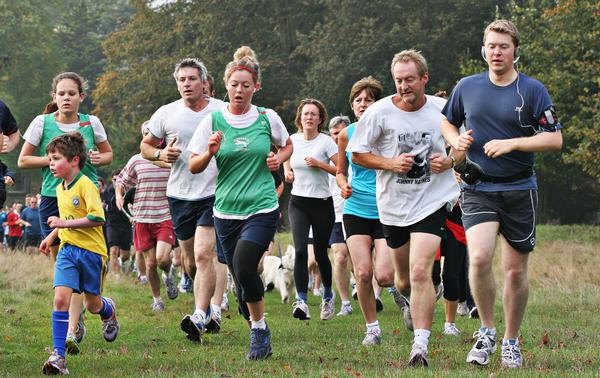

|

parkrun’s collaboration with Fitbit is an example of an effective and relevant tie-up |
|
|
 |

Stephen Tharrett & Mark Williamson
Co-founders
ClubIntel, US
 |
|
Boutique fitness studios and microgyms will continue to garner a greater share of consumer activity. Consumers’ desire to belong to a passionate community, to enjoy specialised experiences that speak to the individual and to receive instant gratification will continue to grow. Consequently, business propositions that value the ‘cash in clans’ versus ‘cash in masses’ will thrive.
Digital middlemen, social media, mobile technology and streaming self-directed fitness applications will make further inroads, while subscription-based business models (such as monthly fees and contracts) will lose market share to on-demand, real-time payment plans – plans whereby consumers pay for what they want, when they want it and how they want it.
A budget club war will also emerge. As more health club operators pursue the budget or low-cost business model, the growing competition will result in a few operators rising to the top – and the majority struggling to survive.
| |
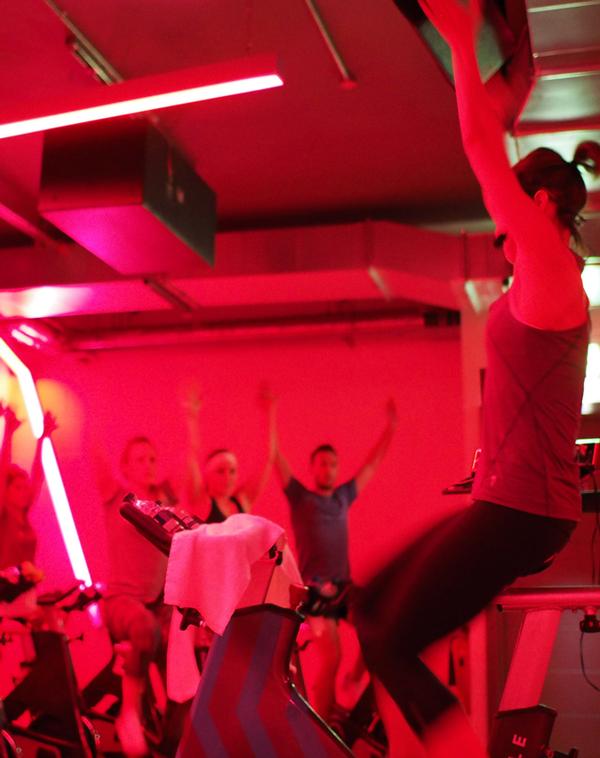

|

Brands like Psycle London value the ‘cash in clans’, not in the masses |
|
|
 |

Humphrey Cobbold
CEO
Pure Gym, UK
 |
|
This year will be characterised by continued polarisation in the market: there will be over 600 budget clubs with over two million members by the end of the year, and we’ll see further growth of niche studios too. These operations will garner a lot of column inches, but the reality is they will remain small in terms of overall scale: not many people can afford £20 for a 40-minute workout.
Meanwhile, the relentless march of technology will continue to impact the fitness sector, which is generally backward in this area. It’s not just about wearable tech, but about much more fundamental changes to how consumers live and run their lives and want to interface with companies that provide them with products and services.
"It’s not just about wearable tech, but about fundamental changes to how consumers live and run their lives and interface with companies"
|
|
 |

Andy Gill
Director
Ethics Leisure, UK
 |
|
We’ll see a sizeable shift from traditional gym-based fitness towards outdoor training and mass participation events this year, as more and more people embrace the opportunity to challenge themselves but have fun at the same time. Obstacle Course Racing (OCR) will become huge: I believe it will be the fastest-growing sport in the UK in 2016 and may become a future Olympic sport.
But this also represents a great opportunity for gyms, as 90 per cent of participants train for an OCR event at an indoor or outdoor fitness facility. Creating an OCR training community with practical indoor and outdoor sessions will attract more members and differentiate a business, keeping members engaged and motivated for longer.
| |


|

90 per cent of people train for an Obstacle Course Race (OCR) at a local gym |
|
|
 |

Chris Foster
Professional head of fitness,
Nuffield Health, UK
 |
|
The industry is in a very interesting place right now, with the top-end operators, boutiques and budget chains all offering the consumer very distinct choices. Consumers are also becoming more educated about fitness, while digital technology and wearable devices are changing the way society behaves. Now more than ever, the customer is king – which means it’s crucial to set and deliver on (or indeed exceed) their expectations.
With this in mind, we need high quality fitness staff who can go above and beyond the basic capabilities of a fitness instructor or PT. Consumers are looking for the fitness industry to offer a more holistic approach to health, fitness and wellbeing, so we should expect a continued movement towards a whole person approach – taking into account not just a person’s physical health and fitness, but also their mental, emotional and psychological wellbeing.
Meanwhile, there’s a huge opportunity to upskill the fitness workforce to support individuals with lifestyle-related diseases such as obesity, type 2 diabetes and cardiovascular disease. If we can deliver evidence-based fitness on a wider scale, we can also develop our working relationships within the medical field.
"Consumers are looking for the fitness industry to offer a more holistic, ‘whole person’ approach to health, fitness and wellbeing"
| |
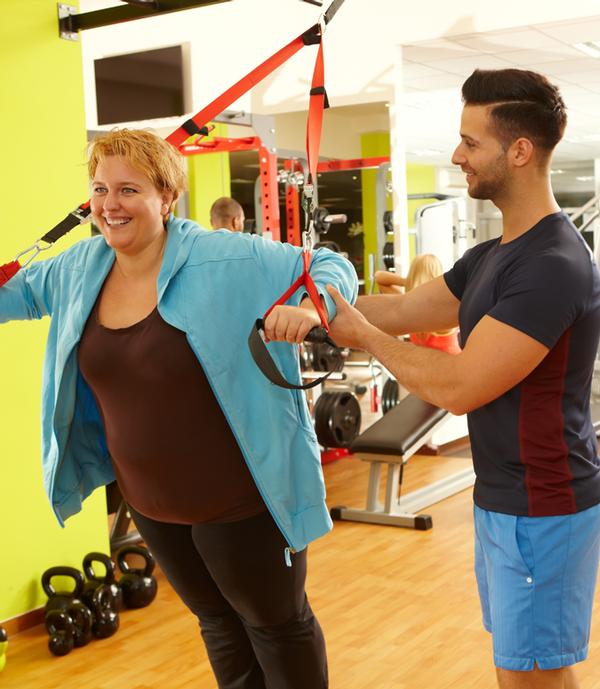

|

If clubs can deliver evidence-based fitness, they will be able to forge partnerships with the medical sector |
|
|
 |

Bryan O’Rourke
President
Fitness Industry Technology Council, US
 |
|
For health clubs, digital – and especially mobile – strategies must continue to be a major focus in 2016; the CIO will become the key player in the revolution of the industry space in the coming years.
As smartphone adoption has reached maturity, the manner in which fitness brands engage and service members via mobile platforms has reached a critical point. Just having an app is not enough: valuable, elegant functionality that wows members is crucial for apps to be relevant and used.
From a business model perspective, the bifurcation trend will continue to push budget expansion on one front, and boutique/high-end service formats on the other. The mainstream health club has reached maturity, as evidenced by continued consolidations in 2015.
We’ve been in an S Curve ‘reinvention’ phase for a while. Look for niche markets and niche business models continuing to garner market share. Pure digital models delivering online coaching and Uber-like delivery will continue to emerge in fitness, while thoughtful high-end brands focusing on exceptional user experiences – through the deft integration of digital and bricks and mortar strategy – will succeed.
|
|
 |

Mark Sesnan
Managing director
GLL, UK
 |
|
More than ever before, the public is recognising that managing our health is our own responsibility, and that conditions like diabetes and obesity can be avoided, improved or reversed through regular physical activity.
Our challenge is therefore to ensure we offer people affordable, accessible options to be active, and here the market is becoming more segmented: extreme sports such as clip & climb, skate parks and trampolining are increasingly popular among the younger demographic, while gentler options tailored for older people are also developing. This means individual customers are more likely to find something they want to do.
In a similar vein, if British athletes do well at the 2016 Olympic Games in Rio, we’re likely to see a surge in interest within specific success sports and we must be ready to cater for this.
Women’s sport is another area that’s growing, whether it’s professional football or through campaigns like This Girl Can. However, the UK public sector has always had a 50:50 male-female ratio, so our challenge is getting the inactive, active.
| |


|
| Photo: CreativeCommons/joshjdss |

Women’s sport is experiencing strong growth, inspired by events such as the Women’s Football World Cup |
|
|
 |

Rasmus Ingerslev
Executive vice-chair
Wexer Virtual
 |
|
From a macro perspective, I believe we will see growth in our sector in 2016. However, market shares may very well shift for two reasons: firstly, the continued growth of low-cost will increase pressure on mid-market operators; and secondly, the boutique clubs will put pressure on the group exercise element of both mid-market and high-end operations.
In regards to major trends in health clubs, I think we will see functional training take up more floor space – predominantly at the expense of resistance machines – while HIIT will take up more space in group exercise schedules and will also move into cycling studios.
There’s also an increased awareness that clubs won’t be defined by their four walls in the future. As a result, we’ll see more investment in technology that can help operators be relevant to their members anywhere, any time.
"We will see functional training take up more space in gyms – predominantly at the expense of fixed resistance machines"
| |
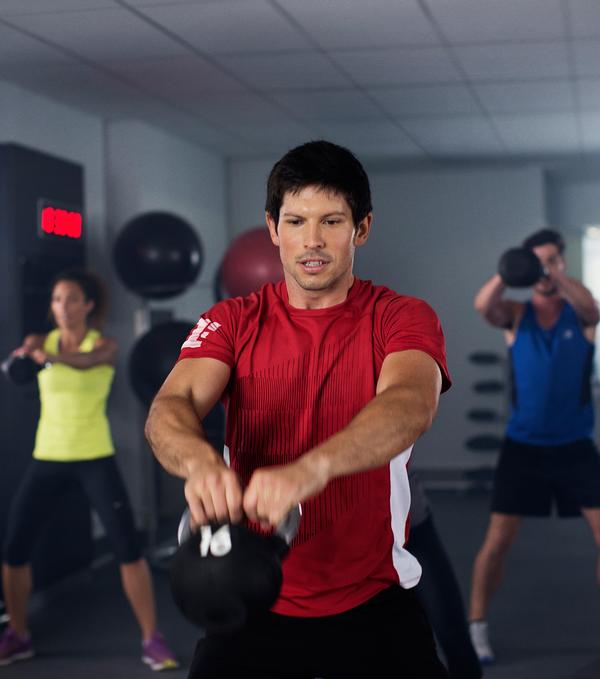

|

HIIT sessions and functional training are growing trends that will inform gym
spaces and layouts |
|
|
 |
| Originally published in Health Club Handbook 2016 edition
|
|
 |
|
